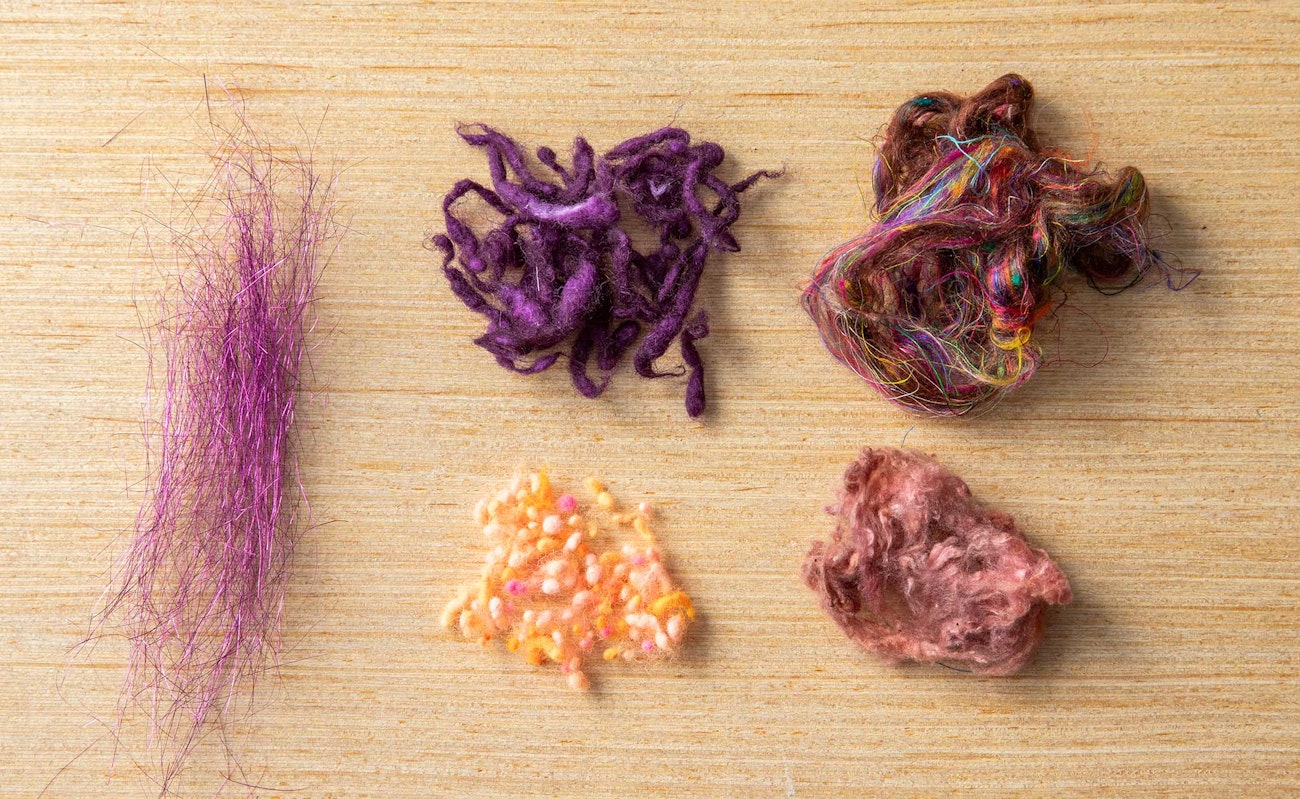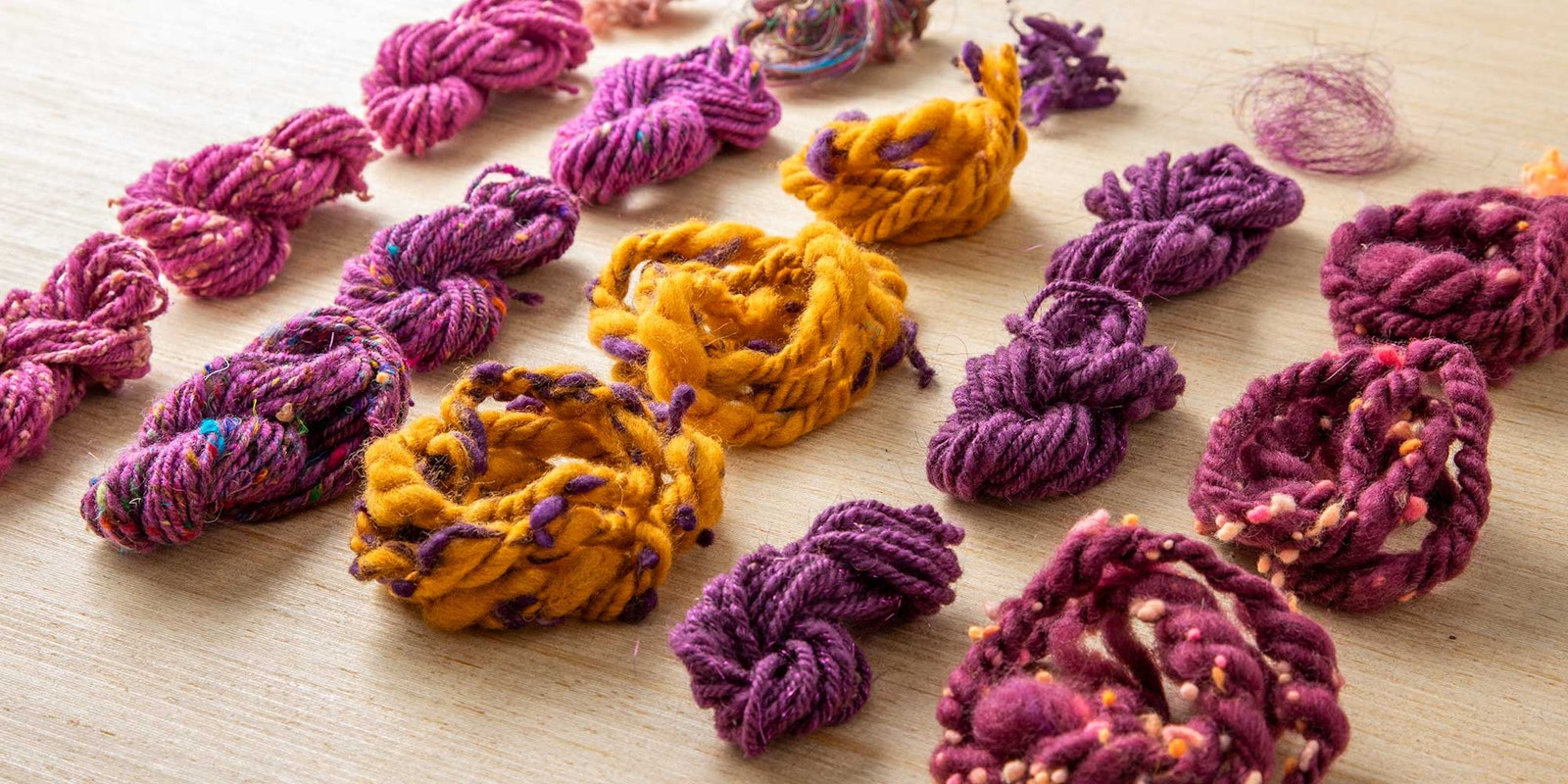My usual approach to carding—wherein I throw whatever catches my fancy through my drumcarder—has led me to create some really beautiful yarn and quite a few lumpy or dense skeins that will never see the light of day. After one particularly difficult batt, I decided to dedicate myself to sampling first and developing a plan for my blends.
Common fiber add-ins that we blend with base fibers to create color and texture—such as silk noil, sari silk, Angelina, and wool nepps—all behave differently on the drumcarder and in our handspun. I can’t count the number of times I’ve incorporated these into my spinning, and yet I had no idea how much I typically used. Would different ratios have varying effects on drape, or would the impact diminish past a certain point?
 Blend ingredients: (left) Angelina, (top row) wool slubs and sari silk threads, (bottom row) wool nepps and silk noil
Blend ingredients: (left) Angelina, (top row) wool slubs and sari silk threads, (bottom row) wool nepps and silk noil
The Add-Ins
Silk noil and Angelina fiber are add-ins that I am comfortable using, having carded them into many projects to add softness or sparkle. With both, I knew that typically a little went a long way, having mistakenly added way too much in the past. I hoped that I could finally learn how much noil I needed to add for my desired effect. I had the same question for Angelina fiber: how much was necessary to add the perfect amount of sparkle to my yarn?
I purchased and dyed some wool nepps on a whim years ago, perhaps inspired by Holly Callahan-Kasmala’s rare-breed tweed, but never got the hang of working with them in my handspinning. The pesky nepps never seemed to want to stay put, jumping out of my singles and plied yarn. Eager to try to learn to love them, I added them to my list of add-ins to study, along with wool slubs, which have a longer staple than nepps.
Sample Set 1
Before I began carding, I neatly divided my multicolor Polwarth top into five 10-gram sections (one for each add-in). I ran each of these sections through my drumcarder once before dividing it again into thirds for the first batch of 3.33-gram samples. Carding the wool once first helped ensure that all of my samples had a consistent start. When considering what ratios of add-ins to Polwarth wool I wanted to sample, I decided on 5%, 10%, and 20% ratios, which came out to 0.17 g, 0.33 g, and 0.66 g of add-ins. These small amounts work if you have a very precise scale. If you have a scale that weighs grams in whole numbers, just work with larger samples.

